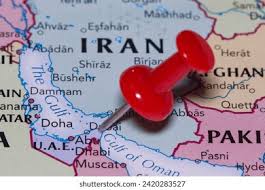Strait of Hormuz Conflict,The Strait of Hormuz is not just a narrow waterway—it’s the most critical maritime chokepoint in the world. Located between Iran and Oman, this vital sea passage connects the Persian Gulf with the Gulf of Oman and the Arabian Sea. Over 20% of the world’s crude oil and 30% of liquefied natural gas (LNG) are transported through this strait, making it a key route in global energy supply chains.
From military confrontations to global oil price hikes, this region remains in the spotlight due to the ongoing Strait of Hormuz conflict, especially amid current tensions involving Iran, the U.S., and Israel.
🗺️ Where Is the Strait of Hormuz? Location, Geography & Map
📍 Strait of Hormuz Location
-
Between the southern coast of Iran and the northern borders of the UAE and Oman
-
Links the Persian Gulf to the Arabian Sea
🗺️ Strait of Hormuz Map Reference
Refer to this interactive map to understand its positioning between the oil-exporting nations of the Middle East.
This region is not just geographically narrow—about 21 miles wide—but is also a military and geopolitical flashpoint.
🔍 Why Is the Strait of Hormuz So Important?
1. Global Oil Transit Point
Over 18 million barrels per day pass through the Strait. That means any conflict here instantly affects global oil prices.
2. Middle East Oil Route Hub
It’s the only maritime exit for major oil producers like Saudi Arabia, Iraq, UAE, and Kuwait.
3. Economic Domino Effect
-
If blocked, oil supply chains collapse, prices rise globally.
-
Impacts major oil importers such as India, China, Japan, South Korea, and Europe.
👉 Want to know how a blockade affects India’s fuel economy? Read here: India and the Strait of Hormuz.
⚔️ Strait of Hormuz Conflict: History, Iran’s Role & Current Tensions
🇮🇷 Iran’s Strategic Influence
Iran’s navy (IRGCN) controls northern parts of the strait and has threatened to block it during geopolitical standoffs.
🛢️ Tanker Wars & Seizures
-
1980s Tanker War: Iran and Iraq targeted commercial oil tankers.
-
2019: Iran seized British oil tanker Stena Impero.
-
2023-2025: Rising drone activity, US naval deployment, and Israel-Iran shadow war keep the tension alive.
📢 Stay updated on the latest Strait of Hormuz news today: Click Here
⚙️ Military & Naval Presence in the Strait
-
US Fifth Fleet based in Bahrain ensures security for global oil shipping.
-
UK, France, and other NATO allies frequently deploy warships.
-
Iran’s IRGC Navy conducts regular war drills.
📉 What Happens If the Strait of Hormuz Gets Blocked?
🌐 Global Consequences
-
Crude oil prices may spike above $150/barrel
-
Shipping insurance premiums increase drastically
-
Economies dependent on oil imports may face inflation and crisis
🚨 High-Risk Chokepoint
With no equivalent alternate sea route, even a temporary disruption has global consequences.
🔄 Alternatives to the Strait of Hormuz
Some countries are trying to reduce dependence on the Strait:
-
UAE’s Habshan-Fujairah pipeline
-
Saudi Arabia’s East-West pipeline
-
China-Iran partnerships for overland routes
Still, the Strait of Hormuz remains irreplaceable for now.
📆 Strait of Hormuz Today (2025 Update)
In 2025, the situation remains tense due to:
-
Drone attacks on cargo ships
-
Cyber warfare originating from state actors
-
US and Israeli airstrikes targeting suspected Iranian positions
Stay informed with live updates from the region here:
👉 Strait of Hormuz Today – Live Conflict Tracker
🧭 Conclusion: Strait of Hormuz – The Pulse of Global Oil Supply
The Strait of Hormuz is not just a waterway—it’s the heartbeat of global energy flow. Any blockade, military activity, or diplomatic crisis in this region can cause worldwide ripple effects on fuel, inflation, and trade.
For policymakers, investors, and citizens alike, understanding the strategic importance of the Strait of Hormuz is essential in today’s volatile geopolitical landscape.
